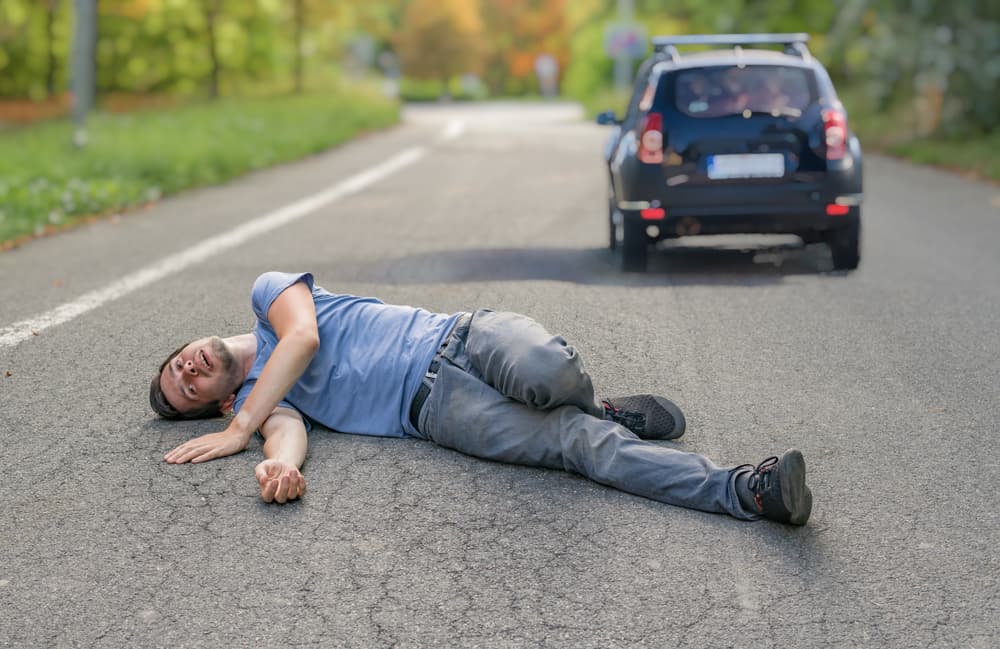You are driving your kids to school or on your way to work when a car crashes into you out of nowhere. In shock, you look around and see the other driver left the scene. What do you do now? How do you pay for your damages and medical bills if the other driver has fled the scene?
A hit and run accident can be a frustrating and confusing experience. Not only have you suffered an injury, but the other driver may also have left you with no way to recover your expenses. Fortunately, however, you may still get compensation for your injuries and losses. Below are some possible options for compensation after a hit and run accident. However, remember that everyone’s situation is unique, so you might want to speak with a Las Vegas car accident attorney and discuss the options available to you.
The Challenges of Being Involved in a Hit and Run Accident

A hit and run accident is when one of the parties involved leaves the scene without providing their name, address, and insurance information. The accident’s severity can range from minor to major, depending on the circumstances of the collision. Whether it’s a fender-bender or a collision that involves multiple vehicles, the consequences and costs can be devastating.
If you have been involved in a hit and run accident, you are likely to struggle with recovering damages due to the following challenges:
- Identifying the driver. If the driver leaves the scene, it can be difficult to identify them unless you or witnesses see and remember the vehicle’s license plate number. However, after the driver flees, victims often do not have all the necessary details to identify and track down the driver.
- Lack of insurance. If you are hit by a driver who flees the scene and cannot be identified, the situation can become problematic if your insurance policy does not cover such collisions. In most states, uninsured/underinsured motorist (UM/UIM) coverage, which may cover damages if you are a victim of a hit and run accident, is not mandatory, and, because it is optional, only a small percentage of drivers purchase it.
- Legal procedures. You may need to file a police report and obtain a copy of the report to file an insurance claim or to take legal action after being hit by a driver who flees the scene. This process can be lengthy and daunting, particularly if you are dealing with injuries and medical treatment.
- Financial strain. Waiting for insurance companies to process your claim or for legal action to conclude can put a financial strain on you and your family. For this reason, you need to have a plan to minimize the accident’s financial impact.
Statistically, there are more than 700,000 hit and run accidents across the United States annually, so these are common events. While being involved in a hit and run accident can be a challenging ordeal, it is important to remember that you may have options to get compensation for your damages and injuries.
Why Do Drivers Flee the Scene of an Automobile Accident?
Fleeing the scene of a car crash constitutes a serious criminal offense in most states, not to mention that a hit and run accident can have extreme consequences on the lives of victims. There are several reasons a driver might leave the scene of an accident without stopping to render aid and exchange information, including:
- Fear. Arguably, the most common reason drivers leave the scene of an accident is fear. They may fear the consequences of their actions, such as getting a ticket, losing their license, or going to jail. They may also be afraid of the reaction of the other driver or passengers in the other car. Fear can cause a driver to act irrationally and make decisions they wouldn’t under normal circumstances.
- Alcohol or drug use. Many drivers who flee the scene of an accident are under the influence of drugs or alcohol at the time of the incident. They may believe leaving the scene will prevent them from getting in trouble for driving under the influence. Driving under the influence is an alarmingly widespread problem in the United States. Every year, more than 13,000 people die in motor vehicle accidents involving drunk drivers.
- No insurance. If a driver does not have insurance, they are more likely to flee the scene of an accident to avoid paying for the damages. This selfish and illegal decision leaves the other driver with the burden of paying for their own damages and losses.
- Panic. Some drivers may simply panic after an accident and leave the scene. They may not fully realize what they are doing and do not know how to handle the situation properly, so they choose to flee.
- Illegal activities. If a driver is engaged in illegal activities, such as transporting drugs, weapons, or stolen property, they may leave the scene of an accident to avoid being caught.
- Mental health issues. Some drivers may have mental health issues that contribute to their decision to flee the scene. They may not be thinking clearly or may experience a panic attack that causes them to leave.
Regardless of why the driver fled the scene of an accident, what matters most is your recovery and obtaining compensation for the damages and losses the hit-and-run driver has caused you to suffer. Fortunately, you may be entitled to compensation to cover the expenses related to the accident.
Your Options for Compensation After a Hit and Run Accident
Contrary to what you might have heard from your friends or read online, receiving compensation for your damages and injuries is still possible if you have been in a hit and run accident. You just need to know the options that may be available in your specific case, which can require the assistance of a knowledgeable car accident attorney. Some of the possible options for compensation include:
1. Claim Against the Hit-and-Run Driver
The first option to obtain compensation after a hit and run accident is to pursue a claim against the perpetrator, assuming they can be identified. The only downside is that this option is only available if the driver’s identity is known. Otherwise, it is not an option. If you can obtain their license plate number or any other identifying information, you can file a police report and work with your attorney to try and locate the driver. If the driver is found, you can pursue a claim against their insurance company or file a lawsuit against them to seek compensation for your damages and injuries.
2. Claim Against Your Own Auto Insurance
If the hit and run driver cannot be identified, you may file a claim with your own insurance company to obtain compensation provided, however, that you have the necessary coverage. If you have uninsured motorist coverage, this can cover damages to your vehicle and injuries sustained in the accident. Personal injury protection (PIP) coverage and medical payments coverage can help cover medical expenses if available in your state, regardless of who was at fault. Collision coverage can help pay for damages to your vehicle if an unidentified or uninsured driver hits you.
Fact: About 12.6 percent of all U.S. motorists are uninsured. As discussed earlier, the lack of insurance is one of the leading reasons motorists decide to leave the scene of an accident to avoid negative legal and financial repercussions.
3. Health Insurance
If you suffered an injury in the accident and have health insurance, you can use that to cover some or all of your medical expenses up to policy limits. Depending on the terms of your policy, your health insurance may also cover other expenses related to the accident, such as ambulance services and physical therapy.
4. Claim Against Your State Crime Victim Compensation Board
Some states have crime victim compensation boards that provide financial assistance to individuals who have been victims of a crime, including hit and run accidents. These boards typically have eligibility requirements, such as reporting the crime to the police within a certain timeframe. They may cover expenses such as hospital and ambulance bills, loss of income, mental health counseling, and many more.
Note: In Nevada, the state’s Victims of Crime Program helps eligible victims of crimes recover from the physical, emotional, and financial impacts of crimes. The program pays for many expenses related to the crime but does not cover pain and suffering damages, property damage, expenses payable by insurance or other sources, and expenses not directly related to the crime.
5. Paying Out of Pocket
In the worst-case scenario, you may have to pay for your damages and injuries out of pocket. This can be a difficult and burdensome option, as it can be expensive and may have long-term financial consequences. However, if you have no other options available, it may be the only way to get your life back on track after a hit and run accident.
Frequently Asked Questions About Hit and Run Accidents

The aftermath of a hit and run accident can be emotionally taxing. Being a victim of an accident in which the other driver flees the scene can leave you in shock and not knowing where to turn for help. You might want to reach out to a car accident attorney in your area and discuss your best course of action following a hit and run accident. The FAQ section below may address some of your most pressing questions. If you need further assistance, get a personalized consultation with a car accident lawyer.
What to do if the other driver leaves the scene of the accident?
If you are in a hit and run accident, always stay calm and follow some critical steps, including calling emergency services and reporting the accident, gathering as much information as possible about the other driver before they flee the scene, and looking around for witnesses who may have seen what happened to ask them for their statement. You also want to immediately contact a car accident attorney who can provide you with the legal guidance you need to navigate the aftermath of the accident and pursue all available options for compensation.
How to report a hit and run accident?
Once you or your attorney has gathered enough information about the accident, contact your insurance company to report the incident. Provide them with the details you have collected so far, such as the date and time of the crash, the location, and the other driver’s vehicle’s identifying information. File a police report immediately as well and provide them with all the information you have collected. Depending on what information is available, the police can track down the driver who left the scene.
What happens if a hit-and-run driver is never identified or apprehended?
In many cases, the driver who flees the scene is never caught or identified. If that’s the case, your insurance company may still compensate for the damages you are facing as long as you have the necessary coverage. However, even if your insurer covers your damages and injuries, the claims process can become too overwhelming to handle on your own, which may require you to seek the services of an attorney.
How can a car accident attorney help me if I have been involved in a hit and run accident?
Attorneys can support you in numerous ways if you are a victim of a hit and run accident. They provide the legal advice and guidance you need, file police reports, communicate with the insurer on your behalf, and offer reliable counsel throughout the process. They will fight tirelessly and diligently to explore all possible avenues for compensation.
Legal representation begins with a free, no-obligation consultation. The Las Vegas personal injury lawyer will assess your best options and answer your questions. You can decide whether this law firm seems like the right fit for you and your case. Never wait to begin protecting your rights and financial future following a stressful hit and run accident.
